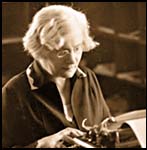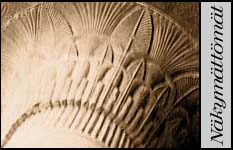




WOMEN OF LEARNING: NAME INDEX | DISCIPLINES | PERIODS | FIRSTS | THE INVISIBLE
LANDMARKS | FACTS | WOMEN'S STUDIES | FRONT PAGE

 |
Science is sometimes defined as a way of seeing things. Women still
far too often constitute a "blind spot" in the vision of the scientific
community. Veronica Stolte-Heiskanen in Women in Science - Token Women or Gender Equality (1991).  The entomologist John Sahlberg wrote to his friend in 1873: "Soon after the wedding I will leave with Mimmi, who also is greatly interested in natural phenomena and has done some studying in botany, for Kuusamo to spend the summer in that fascinating area." On this combined honeymoon and field trip, as on numerous trips later on, Mimmi Sahlberg participated in the collection and cataloguing of plants. She also made donations of her own to the collections of the Societas pro Fauna et Flora Fennica. Mimmi Sahlberg was the first woman to be invited to join this learned society, the oldest in the country. Having received the invitation, she wrote to her friend in horror: "I'm so ashamed. I wouldn't dare to attend the meetings..." Mimmi Sahlberg was not the only wife to support her husband's work without making a fuss about her own contribution. Wives followed their husbands on field trips to the most remote areas to collect plants, dialects and folk heritage. They took roles from typists to proof readers and editors. Sometimes the role of "assistant" or "associate" led to independent research work, but in most cases the famous husband overshadowed the wife's achievements; supporting the husband and running the family's household forced the wife to give up her own career.  1 1
 2 2
1 Mimmi Sahlberg and her husband, entomologist John Sahlberg leaving for a honeymoon field trip to Kuusamo 1873. Photo: Antero Saalas. 2 Mimmi Sahlberg. Photo: Antero Saalas. |
 |